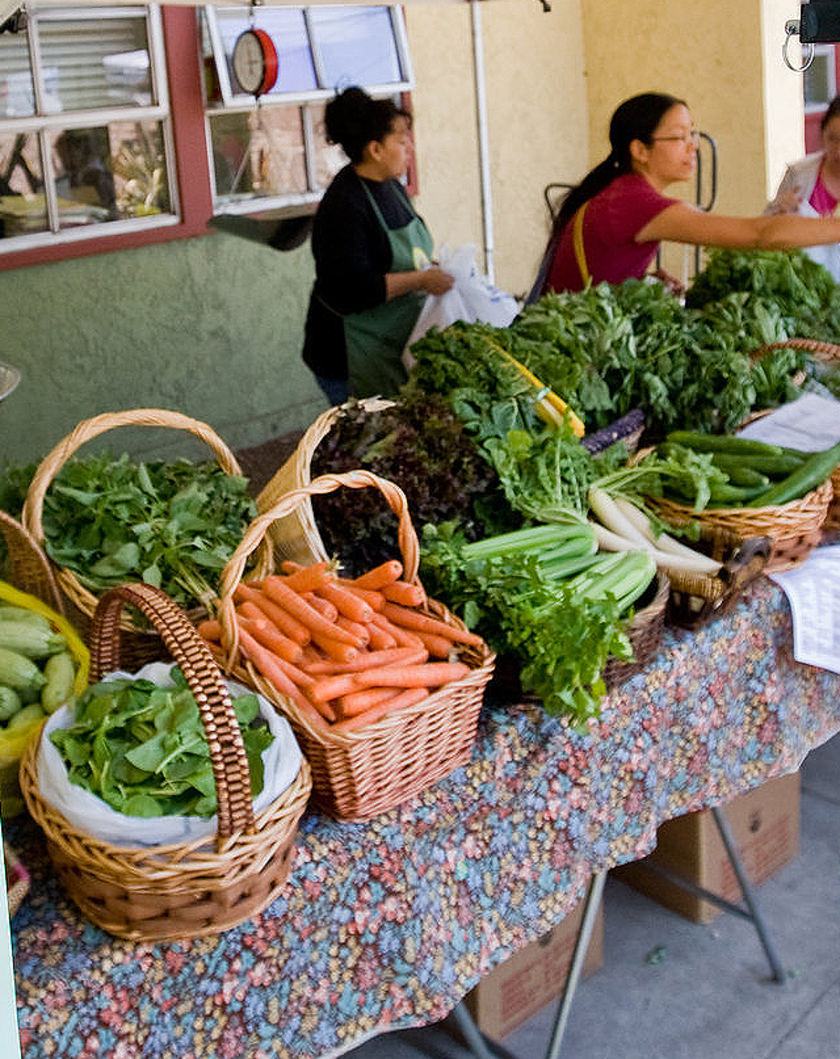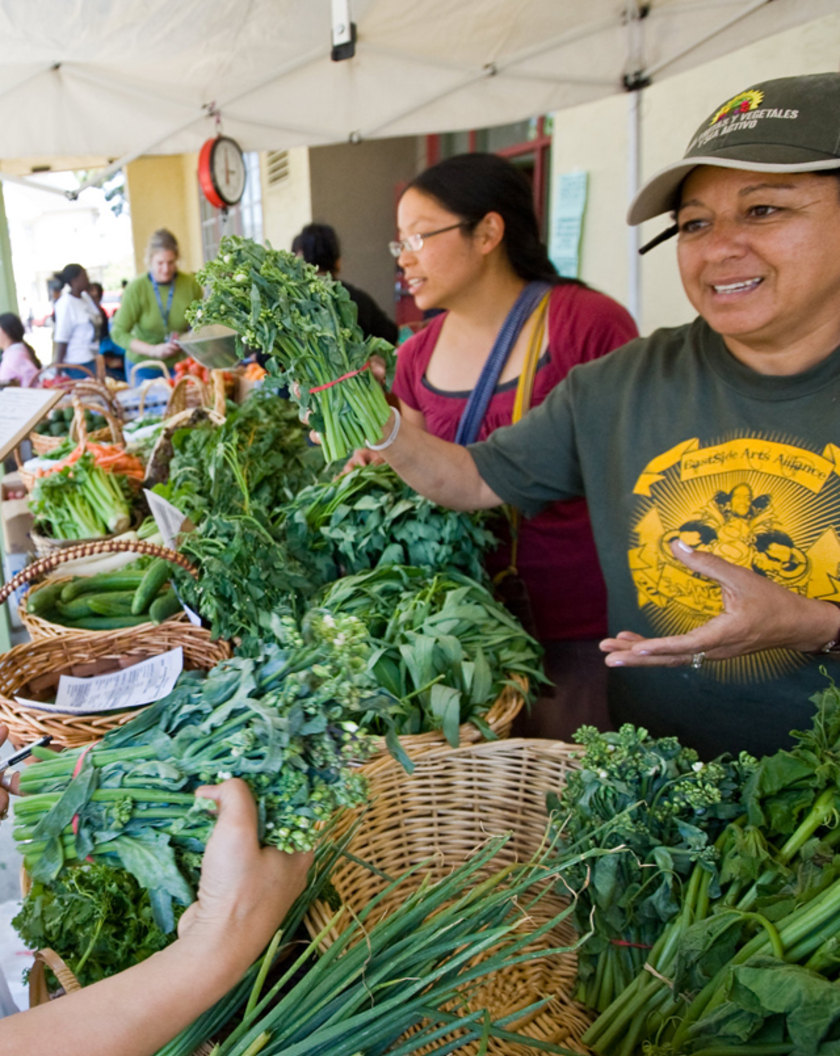
Press Release
Farmers Market Food Navigators Help Low-Income Shoppers Eat More Healthily and Improve Sales
-
Focus Areas
Chronic Disease Prevention, Healthy Communities -
Issues
Nutrition & Food Security -
Expertise
Health Education & Promotion -
Programs
Center for Wellness and Nutrition

Oakland, CA and Lansing, MI-Two collaborative projects funded through SNAP-Ed at the Michigan Fitness Foundation and at the Public Health Institute’s Center for Wellness and Nutrition (CWN) showed that having food navigators at farmers markets can be a simple, low-cost intervention to help shoppers with limited resources stretch their food assistance benefits farther, increase participation, and increase purchases of locally grown fruits and vegetables. The interventions show that farmers market nutrition programs can improve inclusion, support non-traditional market shoppers’ experiences, influence health-related behaviors and increase market sales for local farmers.
Findings from the Michigan Fitness Foundation’s Farmers Market Food Navigator were recently published in a SAGE Journal. The program was independently evaluated by the Center for Wellness and Nutrition at the Public Health Institute (CWN). Over three seasons from 2016-18, food navigators interacted with 22,864 shoppers at eight Michigan farmers markets that accepted SNAP benefits (sometimes called food stamps) and were located in low-income communities. Navigators were recruited from the local community and showed shoppers how to use SNAP benefits, provided nutrition education and activities, distributed nutrition resources and materials, conducted tasting and cooking demonstrations, and introduced shoppers to vendors. This intervention showed success without offering financial incentives, which can be costly and often face uncertain long-term funding. After three seasons, the research showed that in markets with food navigators:
- 80% of shoppers said they would shop more often at the farmers market;
- 52% of shoppers said they would eat more vegetables and 50% said they would purchase more vegetables;
- 57% of farmers market vendors and 50% of market managers in season three agreed that food navigators helped increase overall fruit and vegetable sales.
The program is included in the national SNAP-Ed Toolkit as a research-tested intervention.
A California Department of Social Services CalFresh Healthy Living project led by CWN in 2019 showed similar results and was accepted into the national SNAP-Ed Toolkit as a practice-based intervention. The food navigator model was tested at three farmers markets participating in the California “State Nutrition Action Council: Farmers Market Initiative” (SNAC) program which distributed promotional materials at farmers markets about CalFresh (SNAP in California), Market Match (the federally and state matched funded program at the California Department of Food and Agriculture where shoppers’ can double CalFresh dollars on fresh produce purchases), WIC, and the Senior Farmers Market Nutrition Program. Food navigators showed shoppers how to use food assistance benefits, explained Market Match, and provided interactive nutrition and health education activities on-site at the market in English and Spanish for six consecutive weeks. The results showed that markets with food navigators had:
- a 402% increase in the redemption of CalFresh food assistance benefits, compared to a 31% increase in markets without food navigators, and
- a 202% increase in the number of new Market Match customers, compared to a 13% increase in Market Match in markets without food navigators.
“Encouraging low-income residents to shop at farmers markets is a win-win: communities have more access to healthy, fresh food, and the markets bring in new customers and increase their sales,” said Amy DeLisio, director of the Center for Wellness and Nutrition. “Our research shows that food navigators can attract more shoppers with or without offering incentives and keep more food benefit dollars in the local economy. Farmers markets offer fresh local food options in communities where healthy, affordable food choices are scarce.”
“There’s a local food movement sweeping the nation, but it’s not accessible to everyone equally. Food navigators can advance equity by welcoming often excluded communities into this local food movement,” said Lila Gutuskey, Evaluation Specialist and Director of Public Health Fellow Program at the Michigan Fitness Foundation. “By building connections between farmers and community members, market managers and vendors have reported increased sales and food assistance redemption by returning shoppers who are excited to buy fresh local produce for their families.”
The SAGE Journal publication, “Farmers Market Food Navigator Program: Key Stakeholder Perceptions and Outcomes” is available to journalists upon request. For more information on the California project, see The State Nutrition Action Council: Farmers Market Initiative and for more information on Michigan’s project, see The Farmers Market Food Navigator Program.
Learn more about CWN's work for food security
Work With Us
You change the world. We do the rest. Explore fiscal sponsorship at PHI.
Support Us
Together, we can accelerate our response to public health’s most critical issues.
Find Employment
Begin your career at the Public Health Institute.



